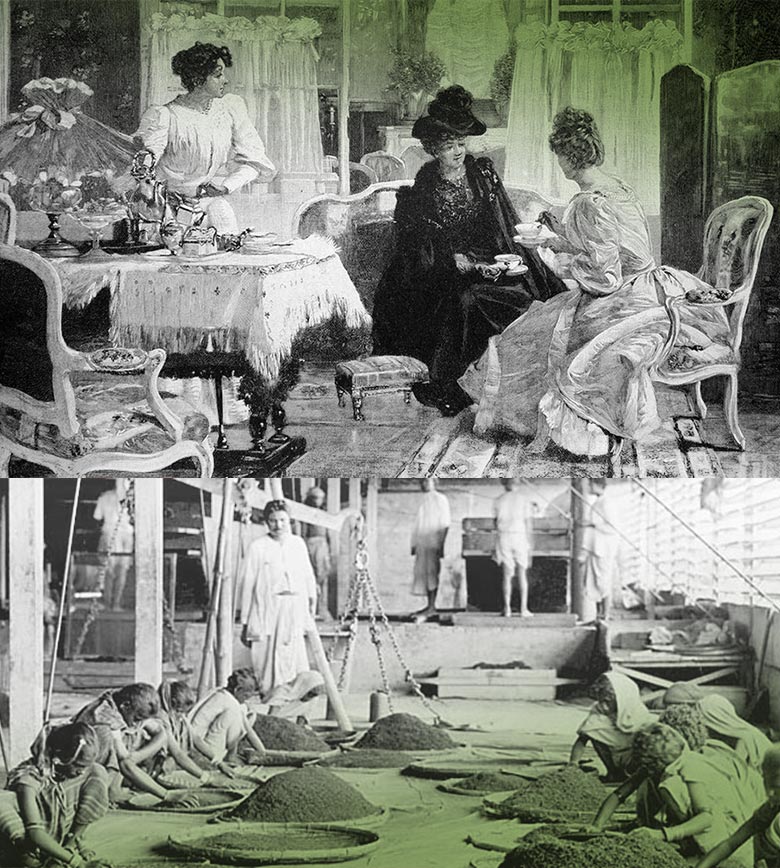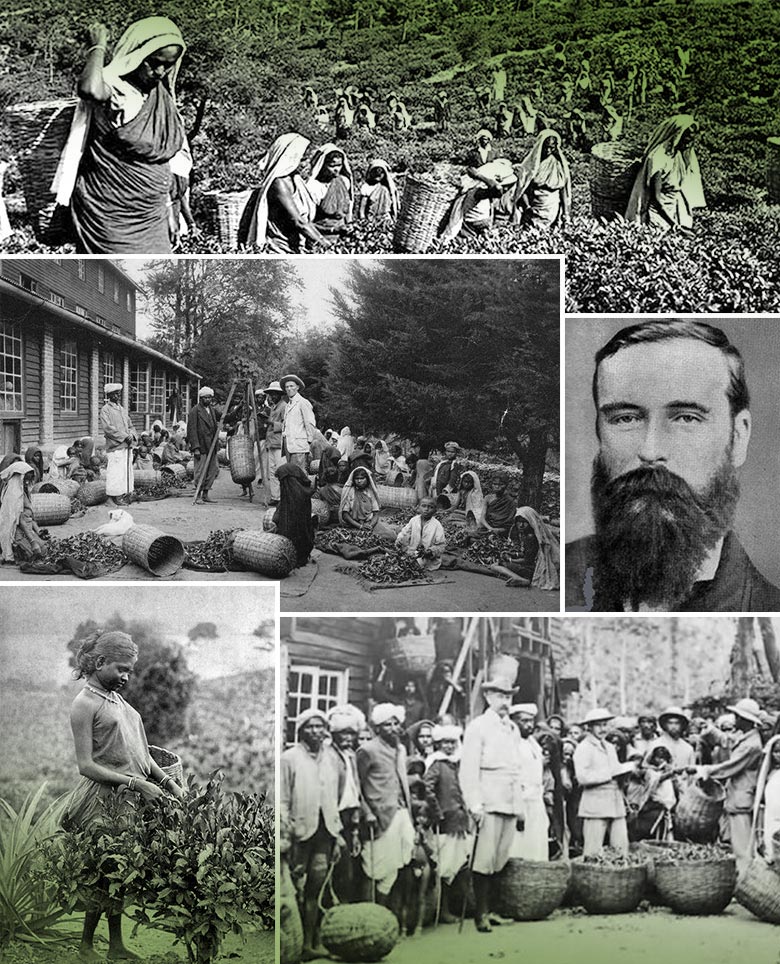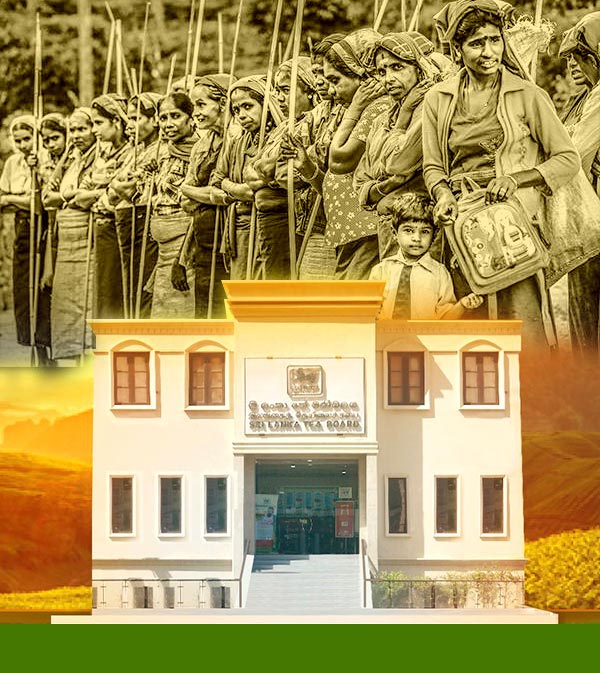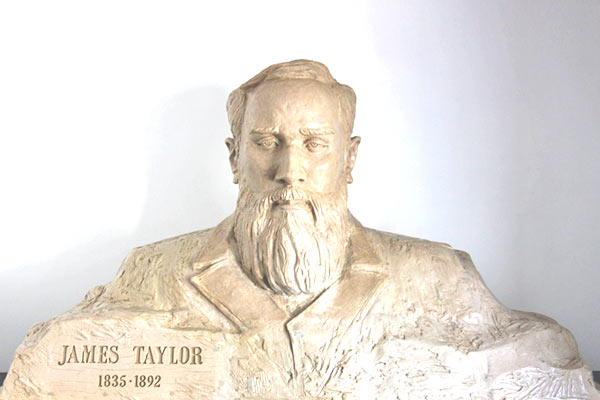
The rise of the Ceylon Tea Industry
From time immemorial Sri Lanka has been immortalized by one thing, and one thing only PURE CEYLON TEA. This tiny leaf from its humble beginnings from an era gone bye to today had fascinated the taste buds of billions of people around the globe. This stimulating but simple brew has a colorful history.
To get our story started we have to go back to the year 1824when a tea plant was brought from China. It was planted in the Royal botanical Gardens in Kandy Peradeniya.
There was plenty of turmoil during the time of the British Raj at the time in Ceylon as we were popularly known ,and in the year 1867, a couple of decades after the first plant was planted as a non commercial plant, James Taylor kicked off the first commercial tea plantation. The original Tea estate was just a mere 19 acres.


CEYLON TEA
A history as rich as the brew
This tiny leaf was the talk of London when a quantity of Tea was sent there and got the attention of the Upper classes who immediately saw a potential of setting up Tea estates and factories. Sir Arthur Conan Doyle remarked on the establishment of the tea plantations, "…the tea fields of Ceylon are as true a monument to courage as is the lion at Waterloo".
What makes our tea so very special and sought after is the fact that we blessed with, humidity, cool temperatures, and rainfall of the country's central highlands provide a climate that favors the production of high-quality tea.
During the time, this ever green plant has its adversaries as well, namely coffee, but a devastating dieses Known as ‘Coffee Leaf Dieses put an end to most coffee production in the country, thus drawing the attention of these big coffee estates owners drawing their total attention devoted to the plantation and production of tea .

Tea production in Ceylon increased dramatically in the 1880s. As our Tea was increasingly sold at auction as its popularity grew. The first public Colombo Auction was held on the premises on 30 July 1883, under the auspices of the Ceylon Chamber of Commerce. We were getting started to a momentous s journey ahead of us. That same year Ceylon tea netted a record price of £36.15 per lb at the London Tea Auctions. In 1894 the Ceylon Tea Traders Association was formed and today virtually all tea produced in Sri Lanka is conducted through this association and the Ceylon Chamber of Commerce. In 1896 the Colombo Brokers' Association was formed and in 1915 saw the formation of the very famous and popular planters Association.
The Tea Plant did have its fair share of natural disasters as well for example the Tea Tortrix caterpillar, which had threatened the tea crop in 1941.
We were well ahead and by the 1960’s our total tea production exceeded almost staggering 200,000 Metric tons and a total of around 200,000 Hectare aces approx. (772Sq Mi).and by 1965 we became the world Largest Tea exporter.
In 1980, Sri Lanka was the proud official supplier of tea at the 1980 Moscow Summer Olympic Games, in 1982 at the 12th Commonwealth Games in Brisbane and again in 1987 at Expo 88 in Australia. In 1981, the country began importing teas for blending and re-exports and in 1982 commenced the production and export of green tea.
By 1996, Sri Lanka's tea production had exceeded 250,000 metric tons, and a very focused work group was need to amass these kind of tonnages. Directly and indirectly, over one million Sri Lankans are employed in the tea industry. A large proportion of the workforce is young women.
The major tea growing areas are Kandy and Nuwara Eliya and the central hills and low country teas from the sabaragamuwa province in the south of the country. Teas are grown from sea level to 2,000 ft (610 m), and thrive in fertile soils and warm conditions.
The Sri Lanka Tea Board opened a Tea Museum in Hantana, Kandy in 2001 providing a valuable insight into how tea was manufactured in the early days.

A time line of History of Ceylon Tea

Tea was brought to Ceylon

Ceylon Chamber of Commerce

Planters' Association

Birth of Ceylon Tea Industry

First sale

First Export

First Public Colombo Auction

Central Tea Factory

Ceylon Tea Record Price

RIP James Taylor

Tea Research Institute

100,000 MT Tea Production

Export Duty on tea

200,000 MT Tea Production

Exports Exceeded 200,000mt

World's largest tea exporter

Sri Lanka Tea Board

Green Tea Production

250,000 MT Tea Production

250,000 MT Tea Exported

300,000 MT Tea Production

On-line Sales

Tea Association SL
Symbol of quality

In over one hundred and fifty years, the name Ceylon had become synonymous with the world’s finest tea. In the world’s eye and tongue, Ceylon was tea and tea was Ceylon.
What Rolls Royce is to cars, Rolex is to watches, Havana is to cigars and Scotland is to whisky; Ceylon is to tea.
The legendary lion of the Sri Lankan flag was introduced to the Ceylon Tea logo, to guard this commitment – the symbol of quality.

